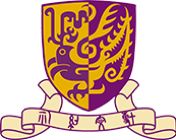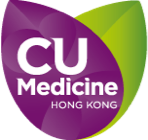Background and Aims
Sleep-related leg cramps (SRLCs) are a sleep-related movement disorder whereby painful contractions of the calf or foot muscles arise at sleep onset and during sleep and awaken the patient, interrupting sleep. In the general population, they are present in 40% of those over the age of 50, and are associated with sleep disturbance and overall poor health. No current treatments for leg cramps have been proven both safe and effective. This study used Shaoyao Gancao Prescription to evaluate the effectiveness of a Shaoyao Gancao Prescription Jiawei in relieving leg cramps.
Methods
This study was conducted in Yan Oi Tong Mrs Shirley W K Siu Medical Centre. All participants diagnosed with sleep-related leg cramp were screened for eligibility criteria.
In this pilot study, consecutive patients aged 60-80 years, who met all the eligibility criteria were invited to join this study and receive study herbal treatment in the form of Nong’s Concentrated Chinese Single Medicine Granules for 28 consecutive days. Study follow up visits had been offered every 7 days for 4 weeks and then a post-treatment follow up visit on day 56 (4 weeks post-treatment) after enrolment.
The outcome measure will be rated using the 10cm Visual Analogue Score (VAS) of SRLCs. A higher score indicates greater pain intensity. The VAS was used to measure their leg pain at baseline and each follow-up visits. Duration and frequency of leg cramps were also compared. Daily leg cramps log was filled in by subjects every day from day 0 to day 56. The health-related quality of life using the Short Form 36 Health Survey Questionnaire (SF-36) was also administered at baseline and day 56 visit. Concomitant medication and adverse event were also assessed in each study visit.
Results
A total of 30 subjects fulfilled eligibility criteria and gave their consent to participate in this study.
There was significant pain relief of SRLC after study herbal treatment at day 28 and the treatment effect could extend to day 56 even after stopping treatment for 4 weeks. The mean score of VAS was reduced significantly (p<0.001) from baseline (mean, 7.06; SD, 1.16) to day 28 (mean, 3.76; SD, 2.37) and to day 56 (mean, 3.41; SD, 2.66).
Besides the chief complains of the pain arosed from SRLCs, back pain, shoulder pain and knee pain were the secondary sources of pain. The major problem affecting their daily activities was walking (63.3%) though the mean VAS score of leg pain reduced significantly from day 0 to day 28 and day 56.
In this study, there was no correlation between age and the mean score of VAS (p=0.915) at baseline and during the whole study period of 56 days (p=0.56). Besides, the correlation between duration of SRLCs and the mean score of VAS at baseline and during the whole study period (p=0.091) are insignificant too. Therefore, the severity of leg pain is regardless of their age and duration of SRLCs before recruitment.
Conclusions
There is not much research about the use of herbal medicines on SRLCs although it is a very major problem encountered by the elderly on a daily basis. This study proved that the pain from SRLCs could be relieved by the use of Shaoyao Gancao Prescription despite the unchanged frequency of attack and the QOL. There is no serious adverse event in this study, Shaoyao Gancao Prescription Jiawei is a safe herbal medicine to be used.





